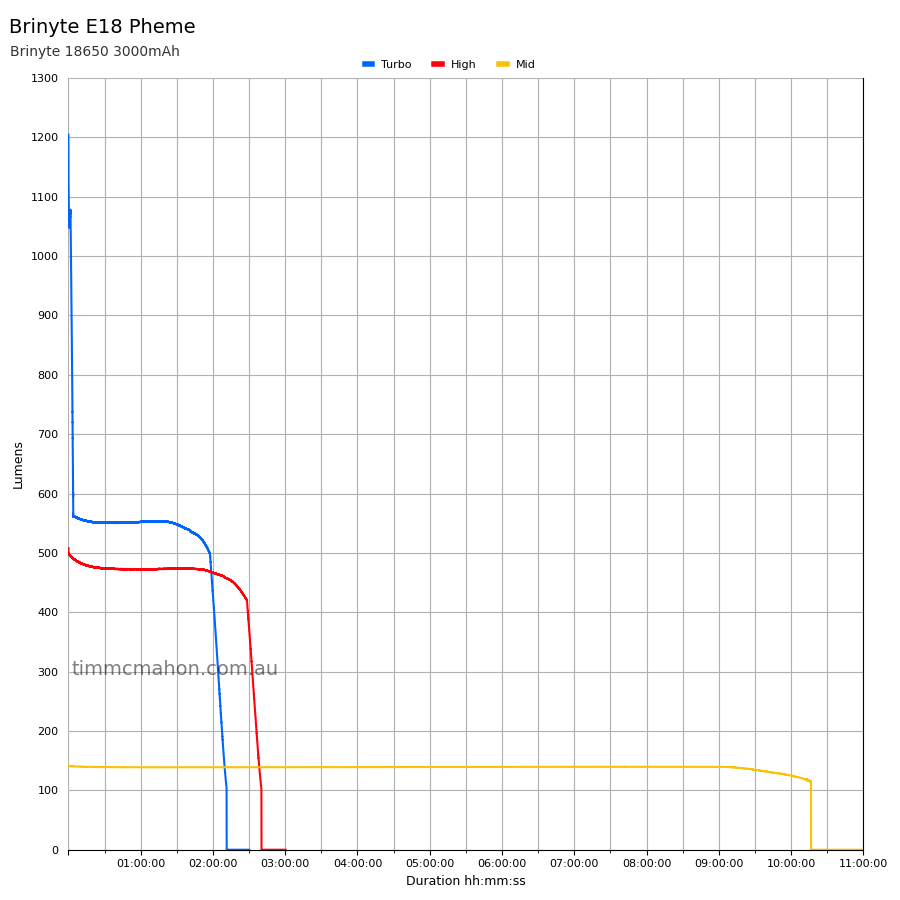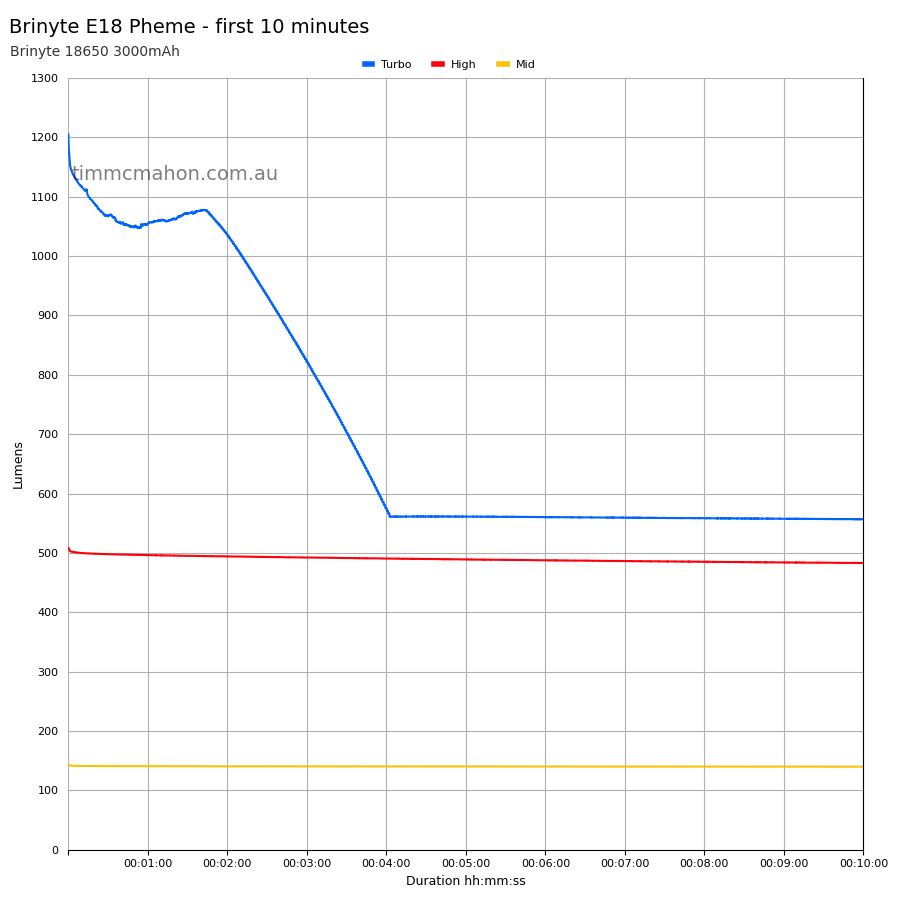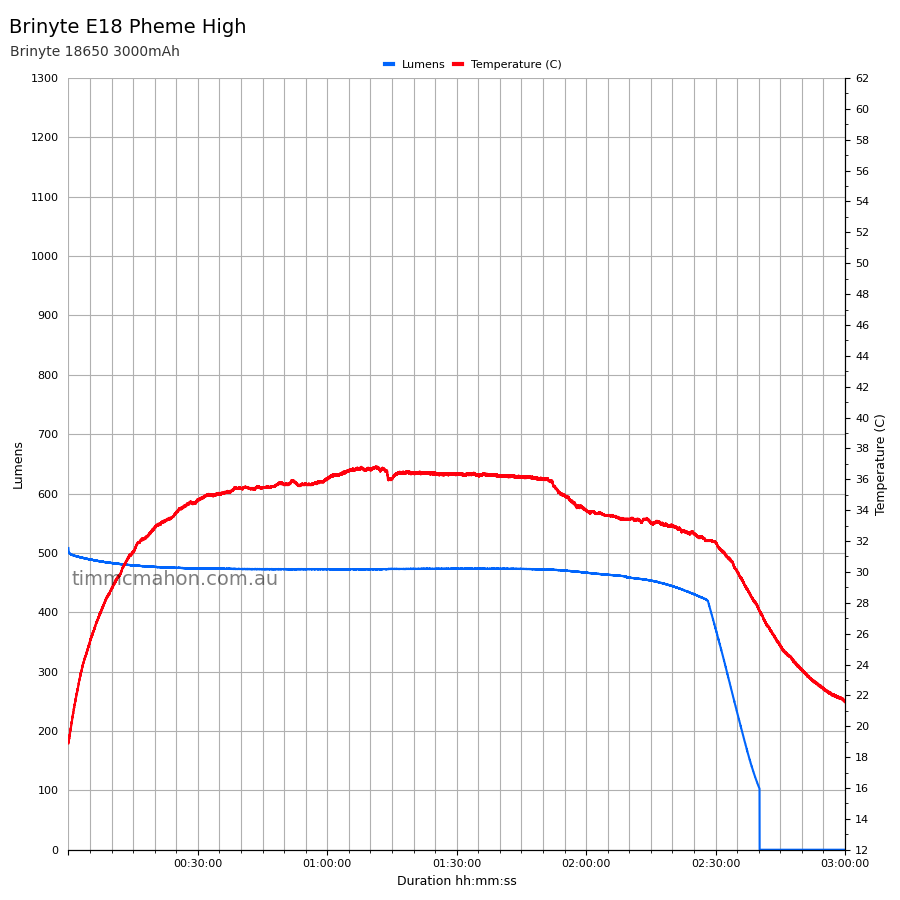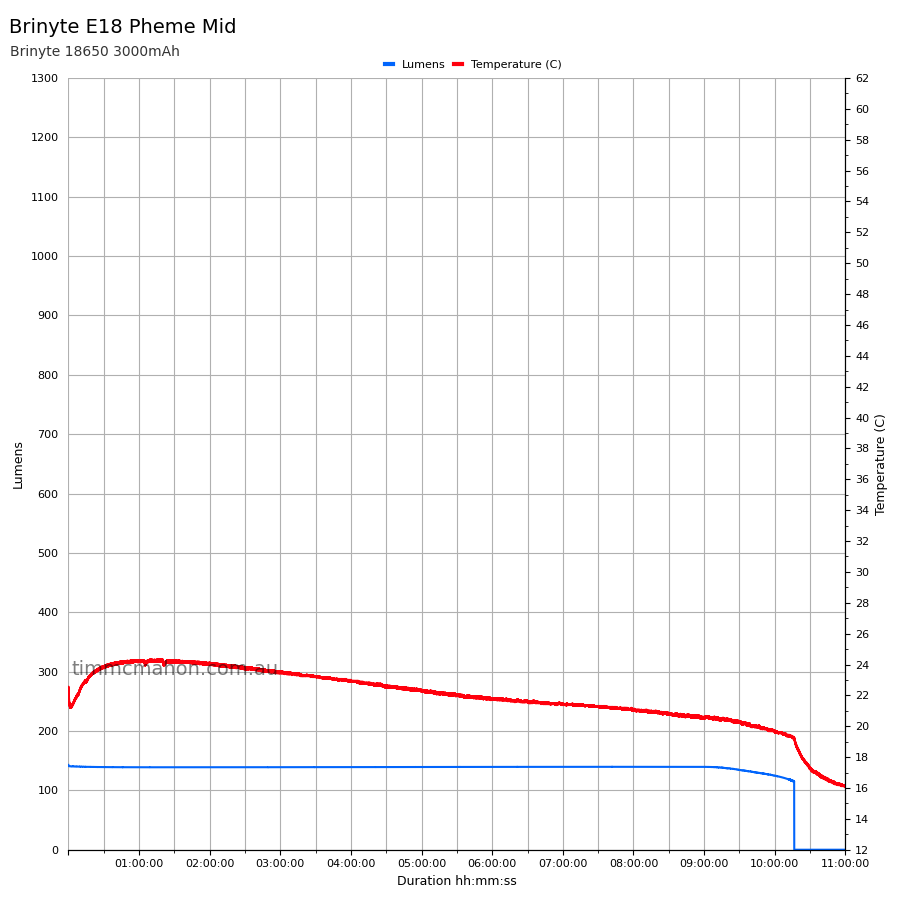Brinyte E18 Pheme Review
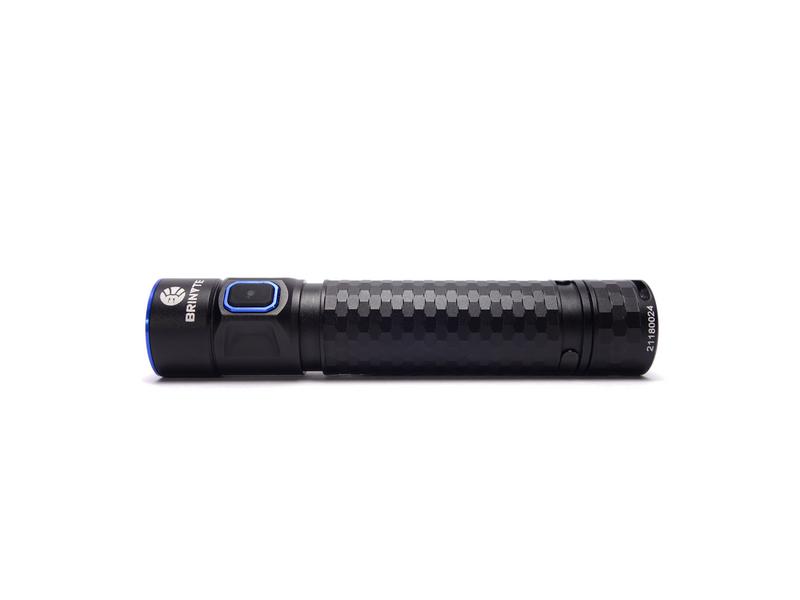
Brinyte E18 Pheme#
This review was originally published on 1lumen.com.
- Specifications
- Introduction
- Torch in use
- Build quality
- LED, bezel, lens, reflector and beam
- Size and comparison
- User interface and driver
- Batteries and charging
- Performance
- Beamshots
- Conclusion
- Product page
Specifications#
| Brand/model | Brinyte E18 Pheme |
|---|---|
| LED | Luminus SST40 |
| Maximum lumens | 1,200 lm |
| Maximum beam intensity | 12,500 cd |
| Maximum throw | 220 m |
| Battery | 1*18650 |
| Onboard charging | Yes. USB-A to USB-C. |
| Material | Aluminium |
| Modes | 5 |
| Blinkies | Strobe, SOS |
| Reflector | TIR optic |
| Waterproof | IP68 |
| Review date | May 2022 |
Introduction#
Brinyte has branched out and entered the world of EDC flashlights by releasing the elegant and stylish E18 Pheme. The company has been around since 2006. They are known for their tactical and hunting flashlights.
I am curious to see what influence Brinyte’s experience with hunting flashlights will have on their new EDC range.
Packaging#
The flashlight came in a plain cardboard box with thick layers of foam to protect the contents.
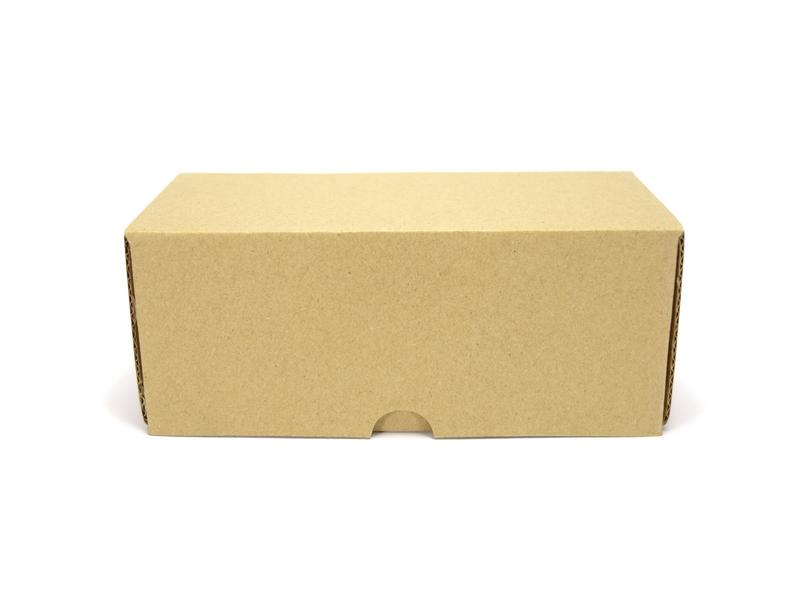
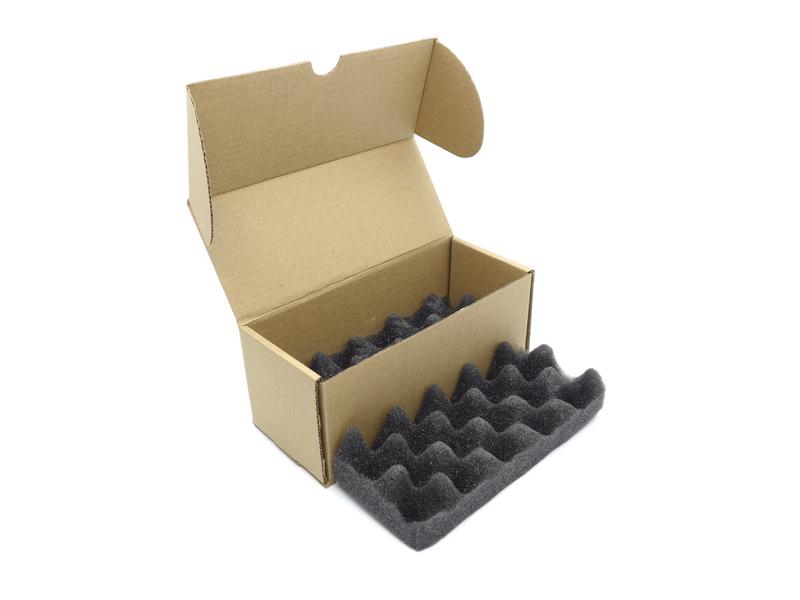
The following was included in the box:
- Brinyte E18 Pheme
- Brinyte 18650 3000mAh cell
- USB-A to USB-C charging cable
- Pocket clip
- Lanyard
- Spare o-rings
- Manual
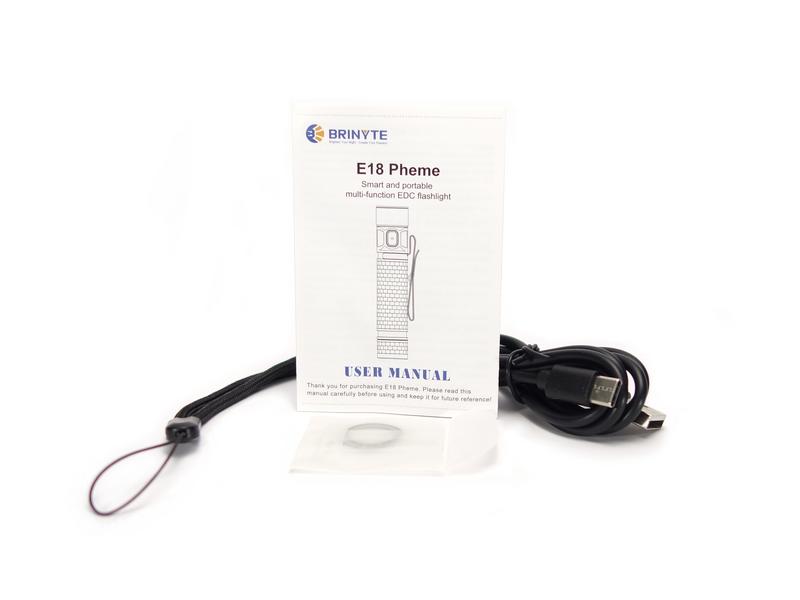
Torch in use#
The E18 Pheme feels lightweight and slender. There are no sharp edges. It easily fits in my pocket and it has not accidentally turned on in my pocket after using it for a few weeks.
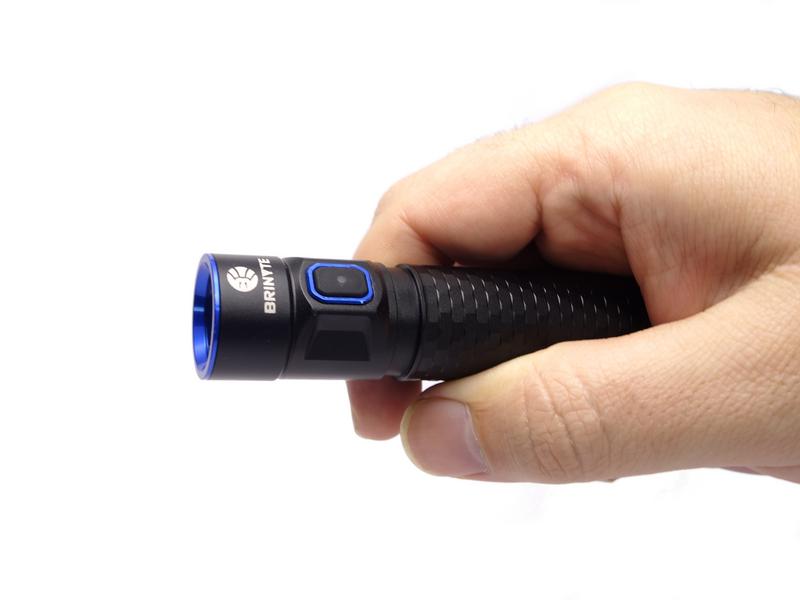
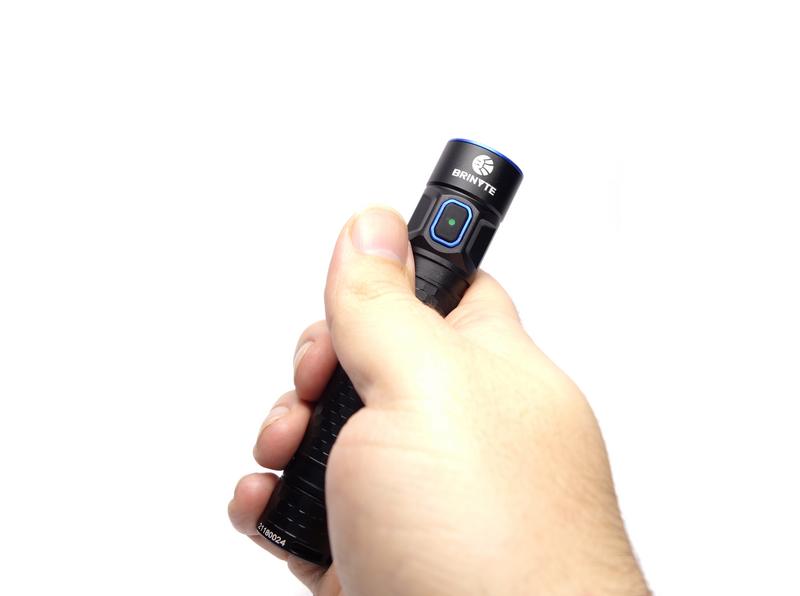
I like how the raised bezel and switch accentuate the location of the switch and help prevent the E18 Pheme from rolling on a surface. I can feel for the bump in the dark to identify where the button is.
It is comfortable to hold the E18 Pheme with the tailcap pressed against the palm of my hand. A modern design has been used for the lanyard hole where the hole is hidden away in the side of the tailcap with no protruding sharp edges.
The tailcap is flat and the flashlight is easy to tailstand. A lanyard will not get in the way of tailstanding due to the hole being on the side.
The magnet in the tailcap is barely strong enough for the flashlight to be mounted to the side of my fridge (it slipped a few times).
The two-way pocket clip is reversible for deep carrying and it feels secure.
Build quality#
Polygonal knurling on the tube and tailcap give the E18 Pheme an elegant and stylish look while adding grip.
The body is made of aluminium and it has a matt black finish. Deep blue bezels give the E18 Pheme some character as a Brinyte branded flashlight.
Threads for the tailcap are very smooth. They are square cut, anodized and well lubricated. The anodized threads allow the E18 Pheme to be mechanically locked out by unscrewing the tailcap slightly.
The spring in the tailcap does not add too much pressure and there is no spring in the head. It is easy to unscrew and screw the tailcap back on while changing the cell.
An unprotected flat top 18650 battery might rattle from side to side while shaking the flashlight with considerable force but I did not manage to disconnect the power.
The charging port cover is a bit difficult to put back in.
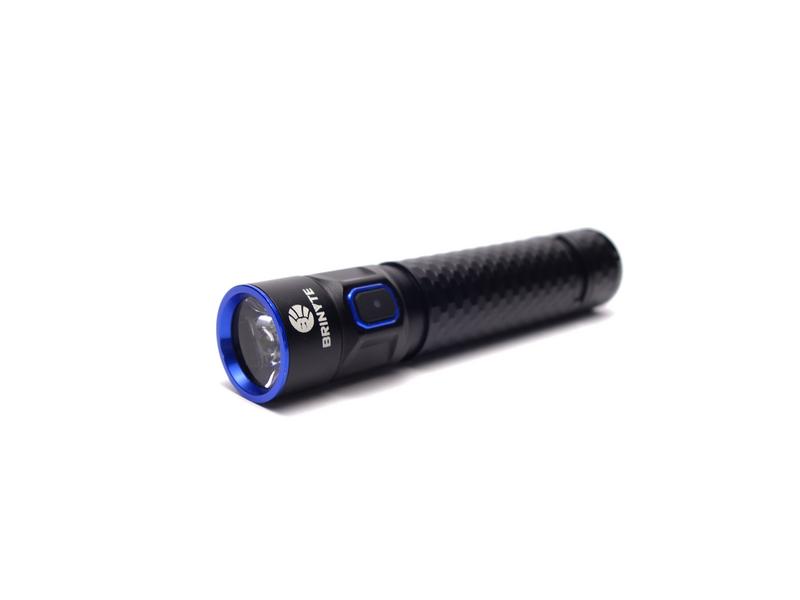
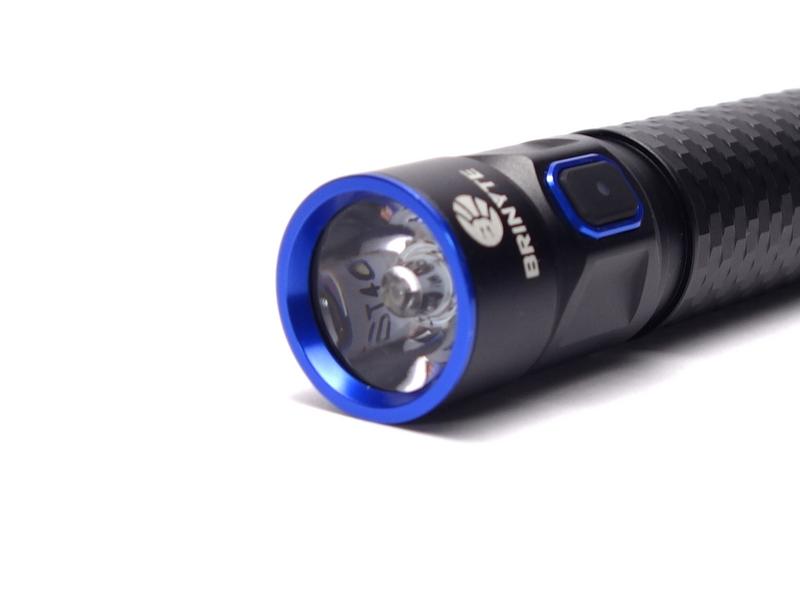
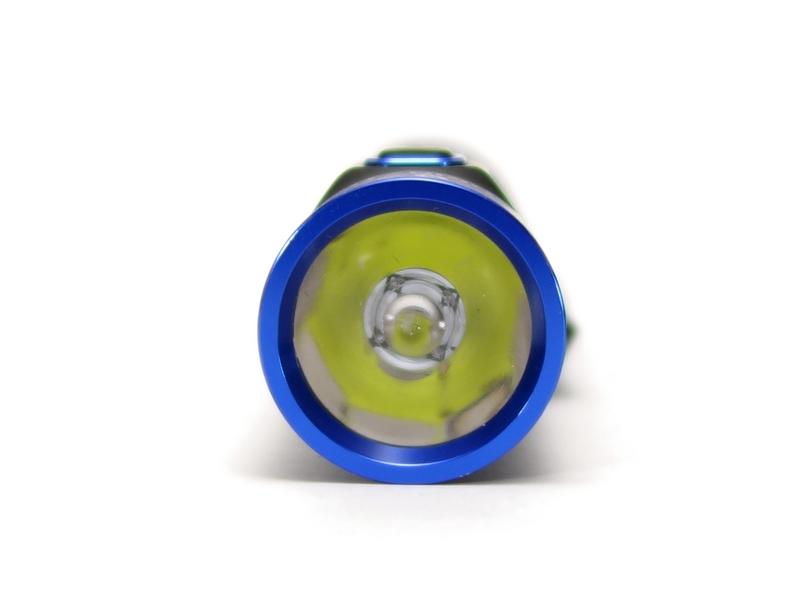
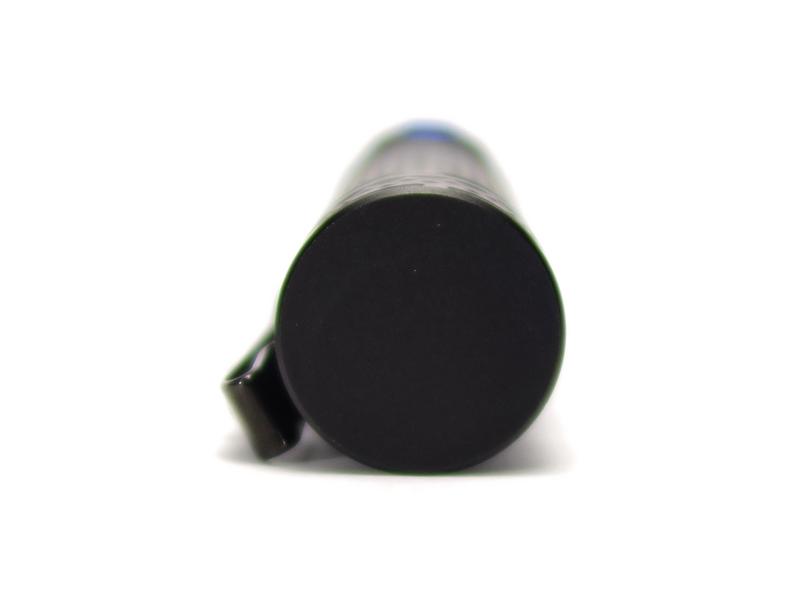
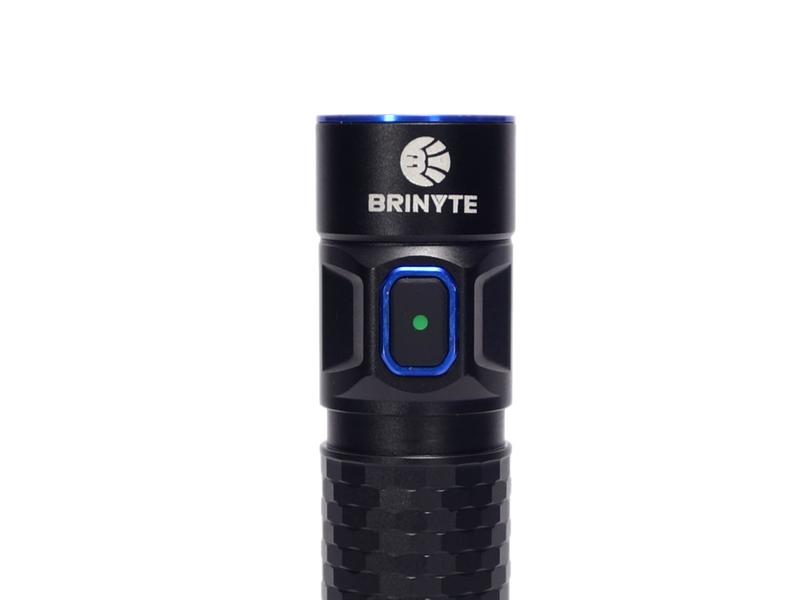
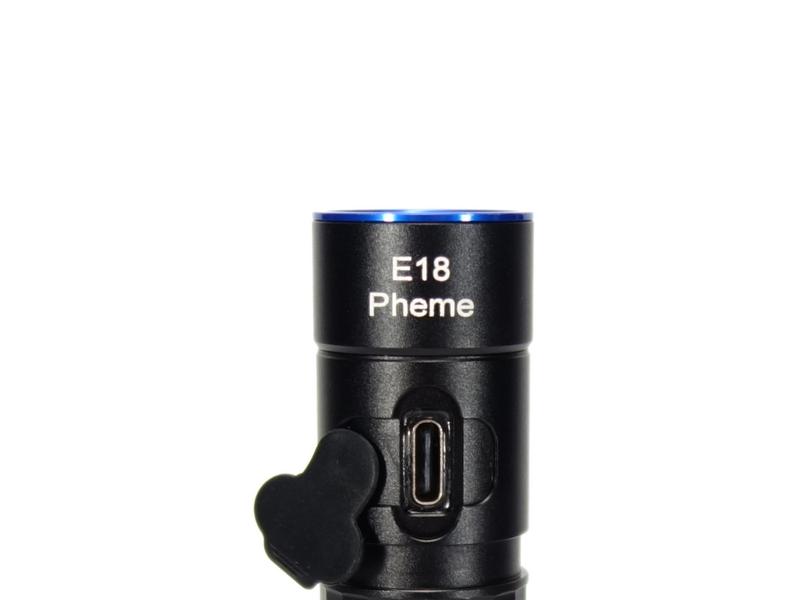
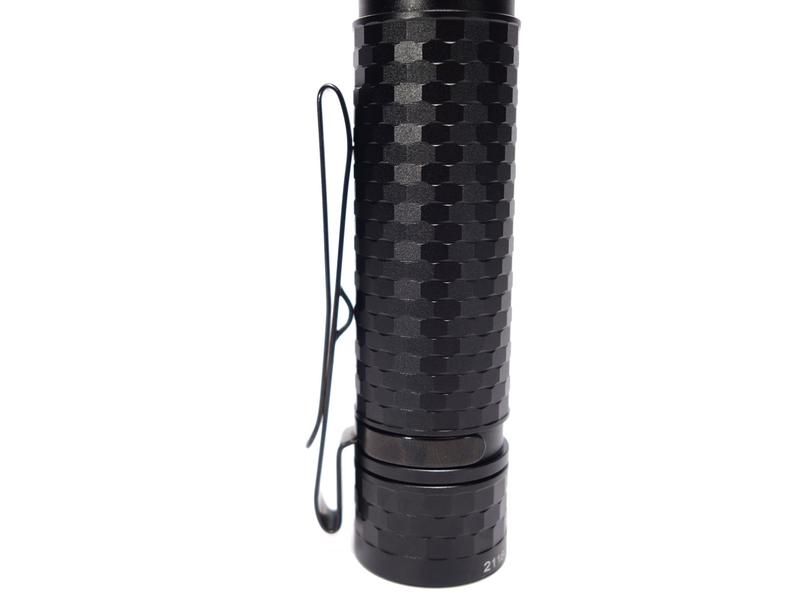
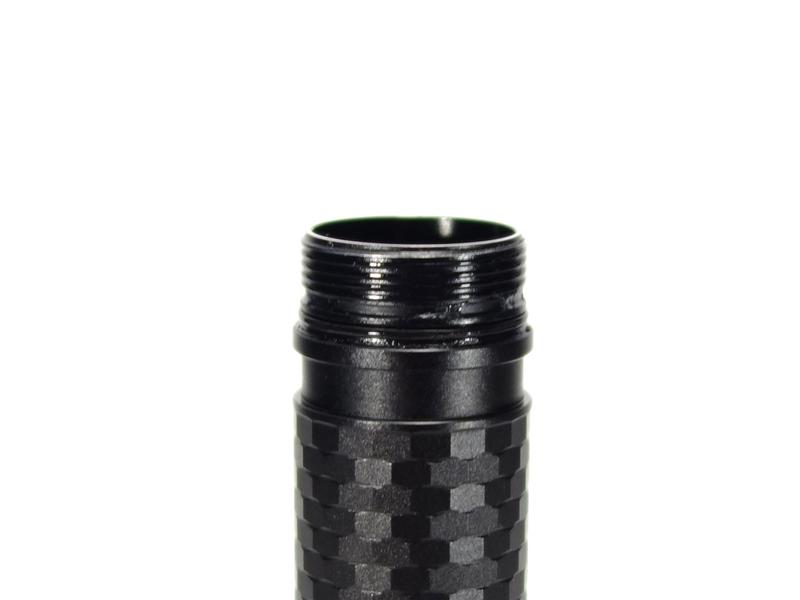
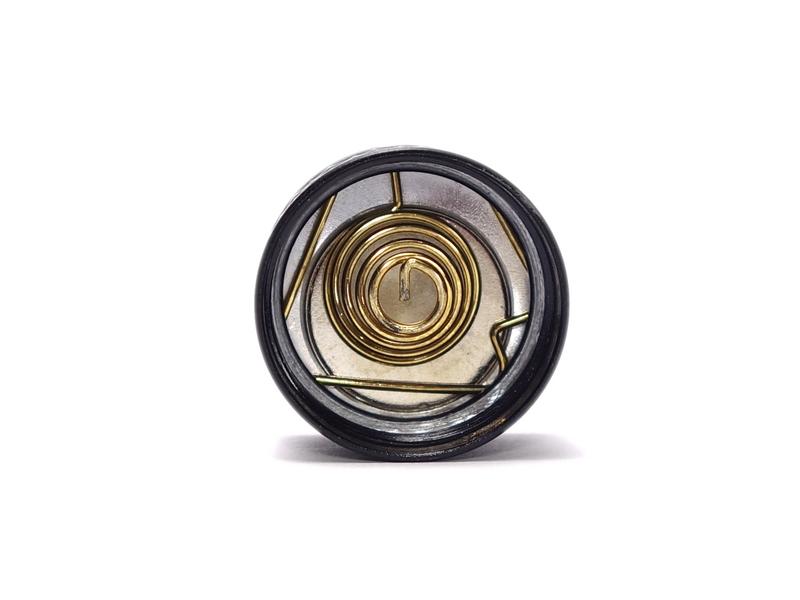
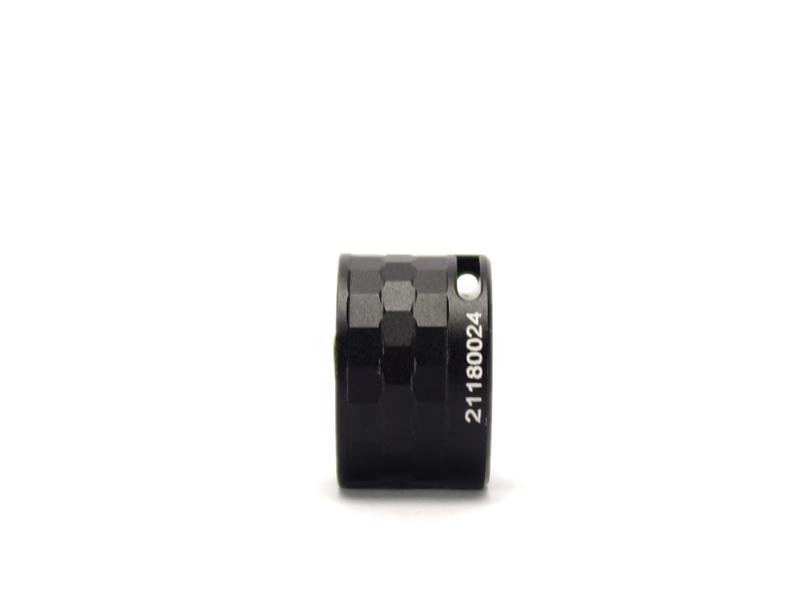
LED, bezel, lens, reflector and beam#
Brinyte has selected the popular Luminus SST40 emitter and combined it with a TIR optic for throw.
A blue aluminium bezel appears to be press fit and it is holding a TIR optic in place. The head, with the TIR optic, can be unscrewed easily to reveal the emitter and MCPCB.
The beam is green on lower modes and neutral on Turbo. There is a hint of blue and green around the outer edge. And the TIR optic produces a flowery pattern.
I used an Opple Light Master Pro III (G3) to take Correlated Colour Temperature (CCT) and Colour Rendering Index (CRI, RA of R1-R8) measurements with the E18 positioned one metre away. I measured a CCT of 5300K to 5638K and a CRI range of 61.9 to 65. The Delta u, v started out at 0.0137 (green) on Moon and reached 0.009 (close to neutral) on Turbo.
| Mode | Lux (lx) | CCT (K) | CRI (Ra) | x | y | Duv |
|---|---|---|---|---|---|---|
| Moon | 136 | 5303 | 61.9 | 0.3381 | 0.3742 | 0.0137 |
| Low | 833 | 5335 | 61.9 | 0.3371 | 0.3730 | 0.0136 |
| Mid | 2,443 | 5382 | 62.4 | 0.3358 | 0.3702 | 0.0128 |
| High | 9,117 | 5505 | 63.7 | 0.3324 | 0.3633 | 0.0110 |
| Turbo | 22,297 | 5638 | 65.1 | 0.3291 | 0.3561 | 0.0090 |
Dimensions and size comparison#
Dimensions#
I took the following measurements using digital callipers.
| Measurement | Unit (mm) |
|---|---|
| Torch length | 115.7 |
| Head diameter | 23.8 |
| Tube diameter | 22.7 |
Weight#
I took the following measurements using a digital scale.
| Measurement | Unit (g) |
|---|---|
| Weight of torch with battery | 105.7 |
| Weight of torch | 57.3 |
| Weight of battery | 48.4 |
EDC size comparison with its competition#
The Brinyte 18 Pheme is slimmer and shorter than a Convoy S2+, and it has built-in USB-C charging.
From left to right: VezerLezer ED10, Brinyte E18 Pheme, Sofirn SC31 Pro.
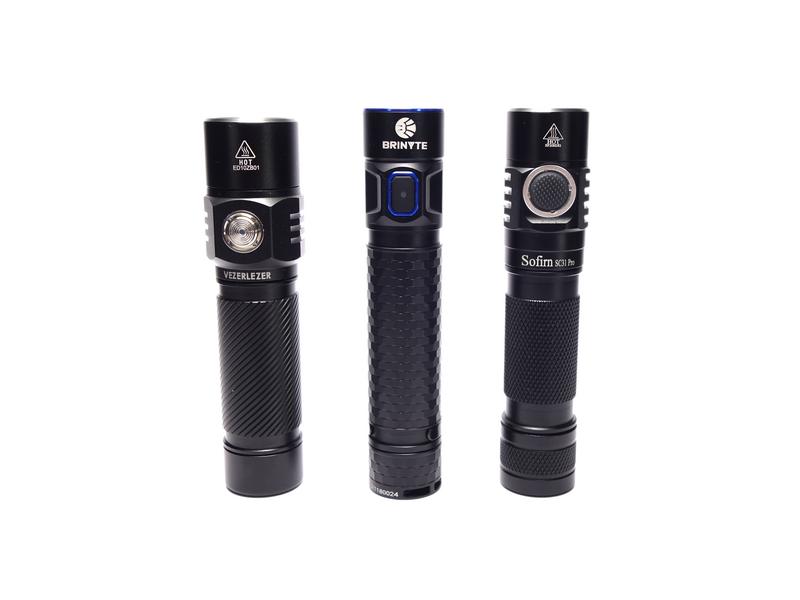
From left to right: ZebraLight SC64w HI, Brinyte E18 Pheme, Convoy S2+.
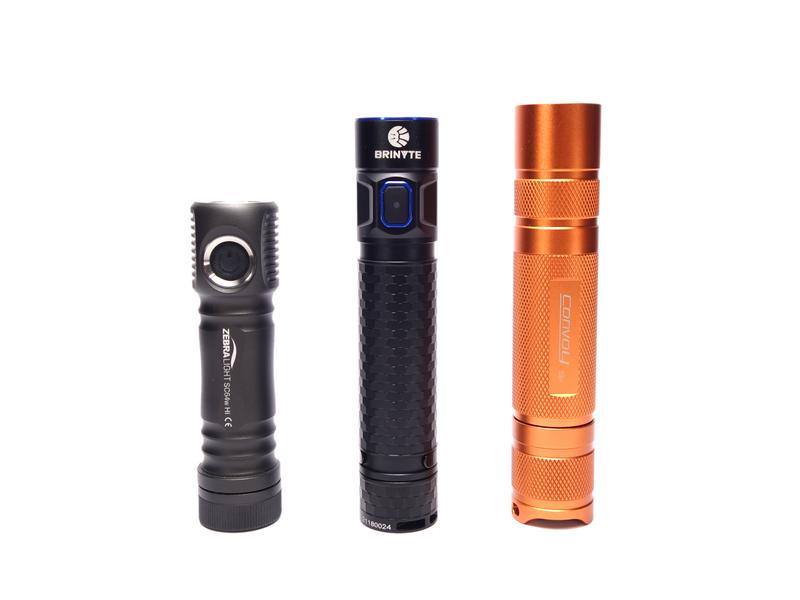
User interface and driver#
The E18 has a simple user interface where you can cycle between Moon, Low, Mid, High and Turbo by holding the button.
| State | Action | Result |
|---|---|---|
| Off | Click | On (mode memory) |
| Off | Hold | Moon |
| Off | Double click | Turbo |
| Off | Triple click | Strobe |
| Off | Five clicks | Activate lock-out |
| On | Click | Off |
| On | Hold | Cycle (Moon-Low-Mid-High-Turbo) |
| On | Double click | Turbo |
| On | Triple click | Strobe |
| Strobe | Triple click | SOS |
| Lock-out | Five clicks | Deactivate lock-out |
Low voltage warning#
The switch has a power indicator LED that turns green or red when the flashlight is on.
| LED | Battery level |
|---|---|
| Green | 30% ≤ Power ≥ 100% |
| Red | 10% ≤ Power ≥ 30% |
| Red flashing | Power < 10% |
PWM#
It looks like there is a bit of visible PWM on High and Turbo.
What I like about the UI#
- Simple.
What could be improved#
- Increase the speed while cycling through modes.
Batteries and charging#
Battery#
A button top Brinyte 18650 3000mAh cell was included inside the E18. The cell arrived with a voltage of 3.88V, and it was isolated with a piece of plastic to avoid standby drain.
A capacity of 3036mAh was measured using Capacity Test mode at 500mA with a Vapcell S4 Plus.
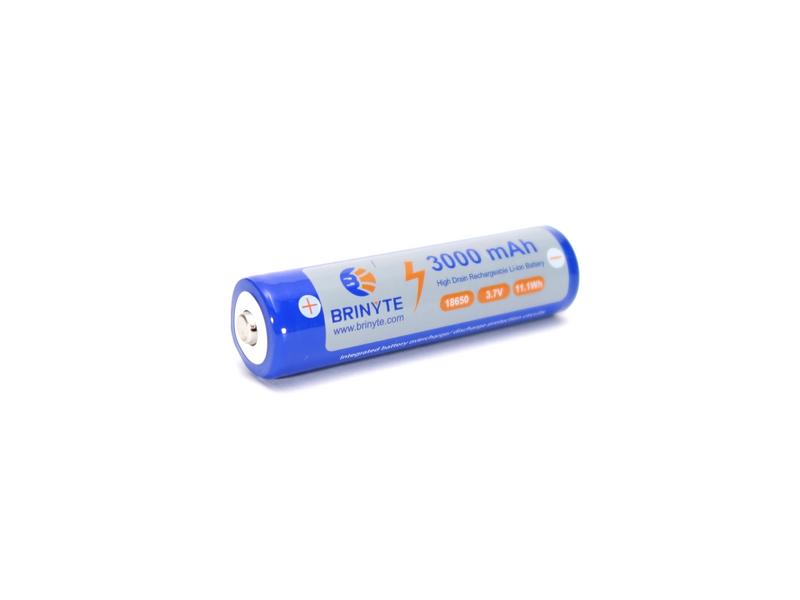
An unprotected flat top Samsung 30Q 18650 cell and a button top protected 18650 cell each fit. The manual mentions that CR123A and 16340 batteries cannot be installed in the E18.
Charging profile#
Power source: Generic 5V 2.4A Power Supply
Room temperature: 16 C
USB Meter: Ruideng UM25C
I discharged the cell to 2.86V and then charged it in the E18 Pheme.
The cell charged at 1A for 4 hours 36 minutes. The current dropped gradually over the last 3 hours and charging ended at 4.17V.
A capacity of 3019Ah was measured using the UM25C.
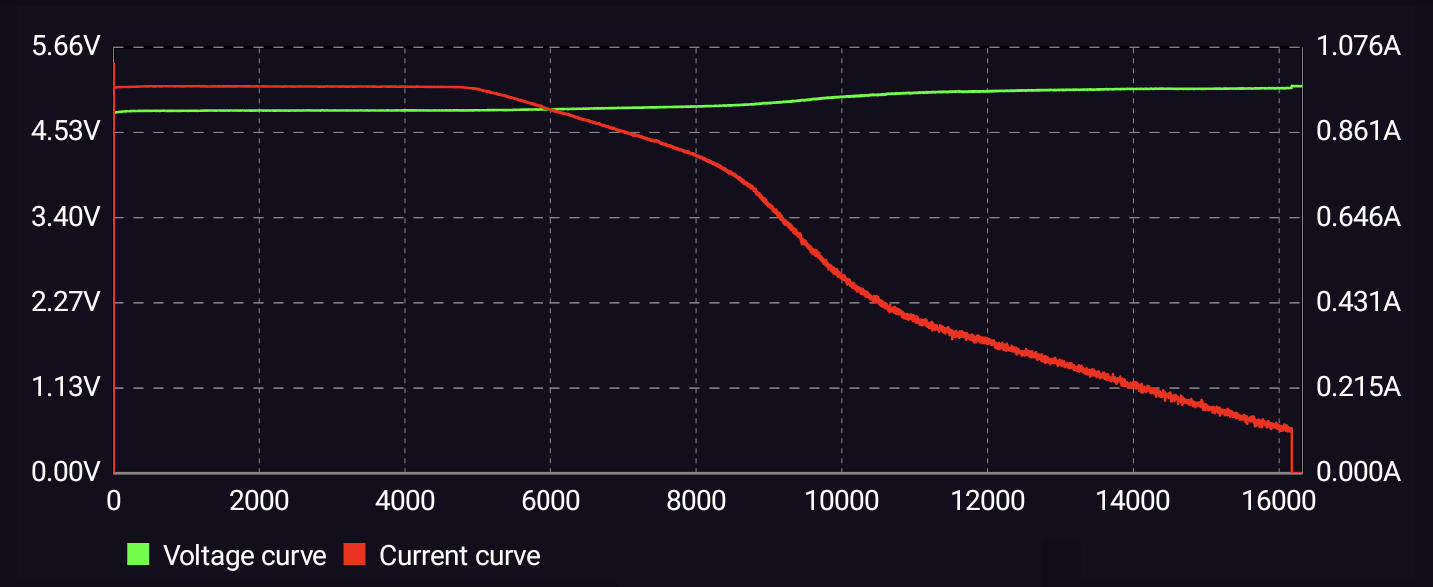
Power supply compatibility#
USB-A to USB-C works.
USB-C to USB-C does not work.
I tried to charge the Brinyte E18 Pheme using the following power supplies:
| Power supply | USB Type | Protocol | Does it charge? |
|---|---|---|---|
| Apple 61W Power Adapter | USB-C | PD | No |
| Google Pixel Power Adapter | USB-C | PD | No |
| Generic 5V 2.4A Power Adapter | USB-A | Yes | |
| Xiaomi PB100DZM | USB-C | PD | No |
| Xiaomi PB100DZM | USB-A | Yes | |
| XTAR PB2S | USB-C | PD | No |
| XTAR PB2S | USB-A | Yes |
Performance#
Official specifications from the manual:
| ANSI/NEMAFL1 | Turbo | High | Mid | Low | Moon | Strobe | SOS |
|---|---|---|---|---|---|---|---|
| Output (lm) | 1200-550 | 450 | 115 | 35 | 5 | 1200 | 200 |
| Runtime (min) | 2-110 | 170 | 630 | 2400 | 13200 | - | - |
Lumen measurements#
To take lumen measure, I built a lumen tube and forked bmengineer’s project RuTiTe to add support for a VEML7700 light sensor and MCP9808 temperature sensor with help from Owen. Calibration lights from maukka were used.
Note: Lumen measurements may be off by more than 10% with my DIY lumen tube.
To measure the current, I used a UNI-T UT139C at the tailcap.
With the included 18650 cell:
| Mode | Amps at start | Specs | Lumens @turn on | Lumens @30 sec | Lumens @10 min |
|---|---|---|---|---|---|
| Moon | 0.02 A | 5 lm | 8 lm | 8 lm | 8 lm |
| Low | 0.11 A | 35 lm | 50 lm | 50 lm | 49 lm |
| Mid | 0.33 A | 115 lm | 143 lm | 141 lm | 140 lm |
| High | 1.20 A | 450 lm | 508 lm | 498 lm | 483 lm |
| Turbo | 3.70 A | 1,200 lm | 1,205 lm | 1,068 lm | 557 lm |
Standby drain#
0.81 mA
Runtime graphs#
The E18 switched off when the Brinyte 18650 3000mAh cell reached 2.89V at the end of each runtime test.
I like how Brinyte have included a breakdown of the output and duration of Turbo in their specifications (i.e. 1200 lumens for 2 minutes and then 550 lumens for 110 minutes). Their estimates line up with the Turbo runtime test that I performed.
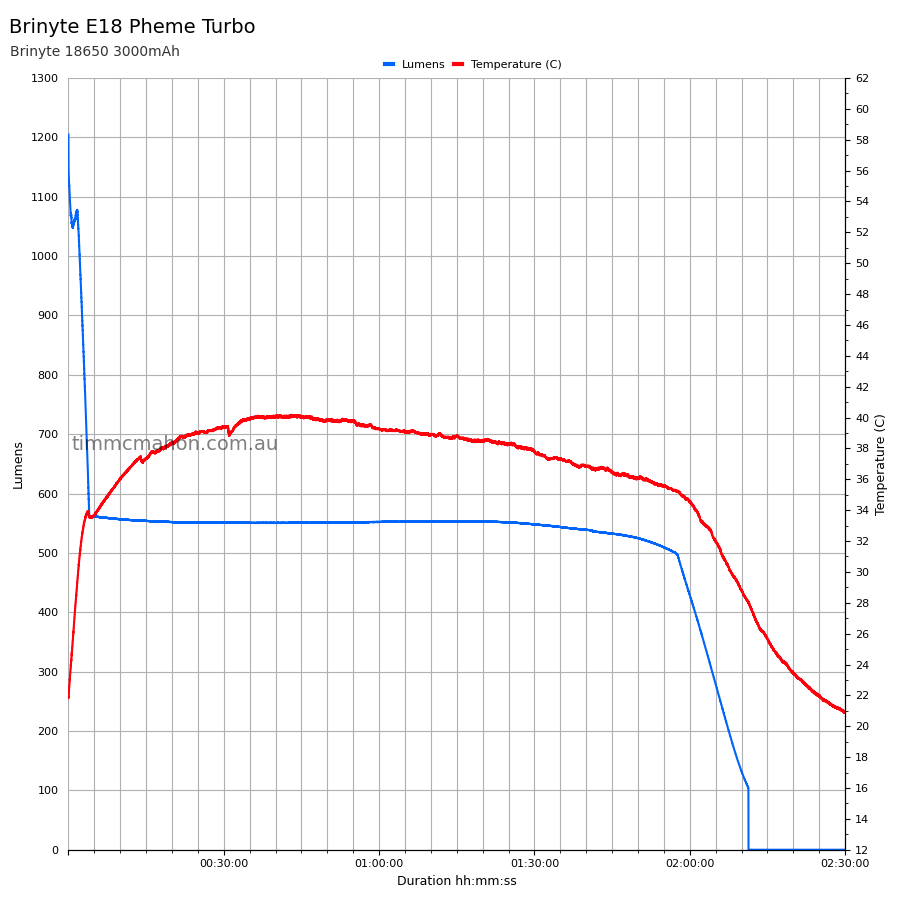
Turbo hit 1205 lumens initially, dropped to 1034 lumens at 2 minutes, dropped to 571 lumens at 4 minutes, dropped to 548 lumens at 1 hour 30 minutes, dropped to 428 lumens at 2 hours, and then it switched off shortly after at 2 hours 11 minutes.
High started at 508 lumens, slowly dropped to 466 lumens at 2 hours, dropped to 421 lumens at 2 hours 28 minutes, and then sharply dropped in output until it switched off at 2 hours 40 minutes. The original estimate was 450 lumens for 2 hours 50 minutes.
Mid achieved about 140 lumens for 2 hours 16 minutes. The original estimate was 115 lumens for 10 hours and 30 minutes.
Low and Moon were tested for 10 minutes. I stopped those runtime tests because they are estimated to last for days.
Throw#
I took lux measurements with a UNI-T UT383BT. Moon was measured at two metres and Low, Mid, High and Turbo were measured at five metres.
Brinyte has only mentioned throw figures for Turbo.
The included 18650 cell was used. I charged it up to 4.196V before measuring Turbo.
| Mode | Specs (cd) | Specs (m) | Candela measured (cd) | Distance (m) |
|---|---|---|---|---|
| Moon | - | - | 76 | 17 |
| Low | - | - | 450 | 42 |
| Mid | - | - | 1,575 | 79 |
| High | - | - | 6,325 | 159 |
| Turbo | 12,500 | 220 | 15,650 | 250 |
The candela measured was slightly higher than expected.
Beamshots#
I went to a local park and aimed the Brinyte E18 Pheme at a tree 70 metres away while using Turbo.
A small tree 15 metres away clearly lit up and a larger tree 70 metres away partially lit up. The beam was slightly narrow with a smooth and practical hotspot due to the TIR optic.
I have taken comparison shots with two other EDC flashlights that also have a Luminus SST40 emitter (Olight Warrior Mini 2 and VezerLezer ED10). These each have a reflector instead of a TIR optic and the spill is much wider.
Beamshots were taken using a Sony RX100M2 using 3.2", f3.2, ISO 100, 5000K WB.
Brinyte E18 Pheme#
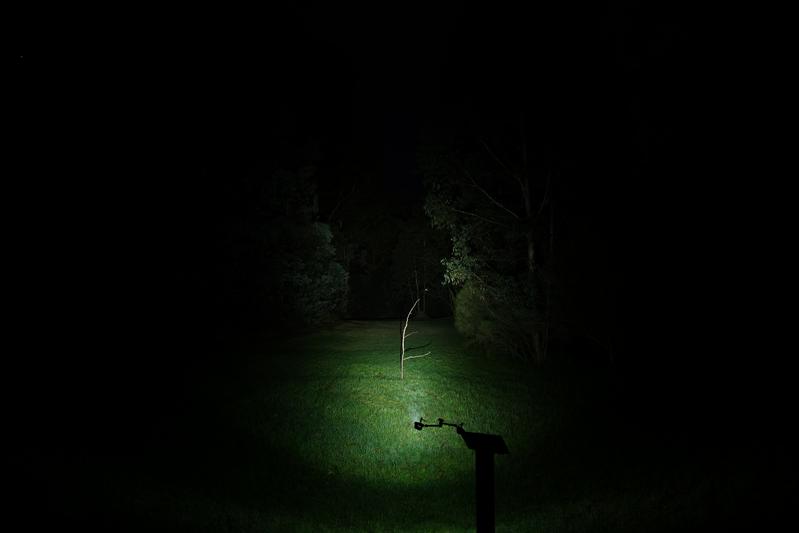
Olight Warrior Mini 2#
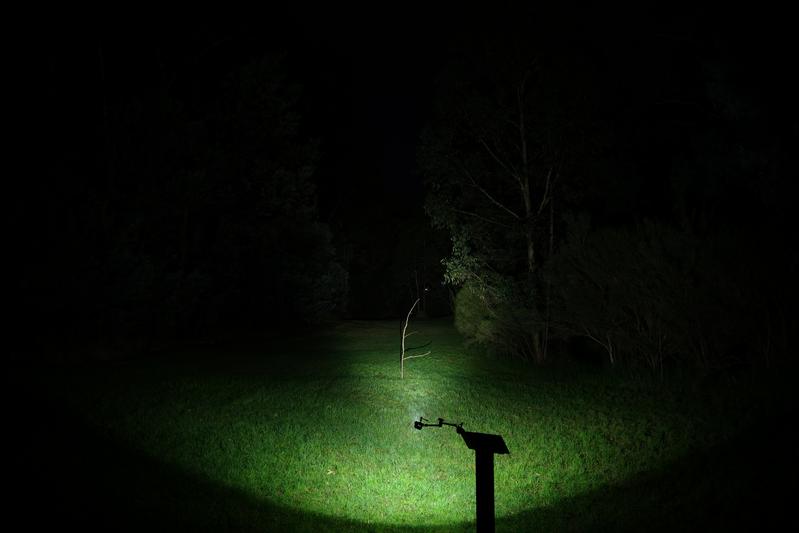
VezerLezer ED10 6500K#
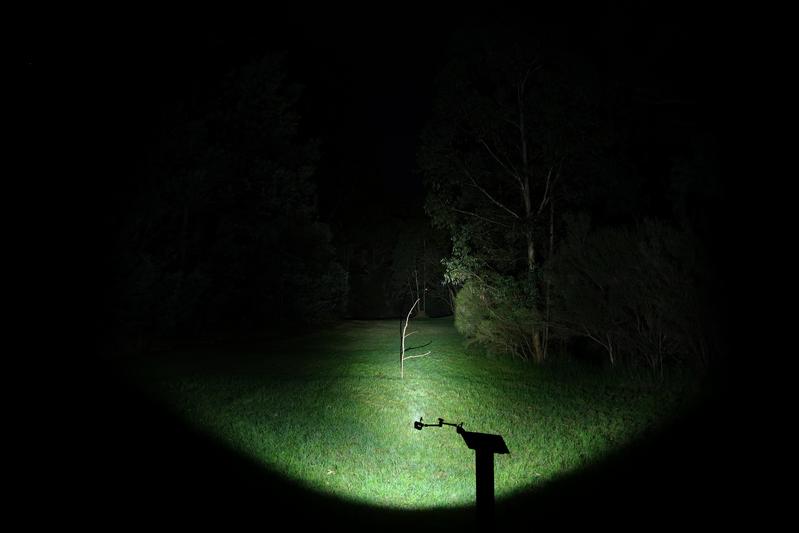
Conclusion#
The Brinyte E18 Pheme is an ideal torch to give as a gift to friends and family. It looks slim and stylish. The user interface is simple. And it comes with built-in charging. I would like it more if it supported USB-C to USB-C charging.
Pros:#
- Lightweight and slim design.
- Power indicator LED.
- Built-in USB-C charging.
- 18650 cell included.
Cons:#
- Charging port cover is difficult to put back in.
- Low CRI LED.
- Magnet in the tailcap is weak.
- USB-C to USB-C charging does not work.
